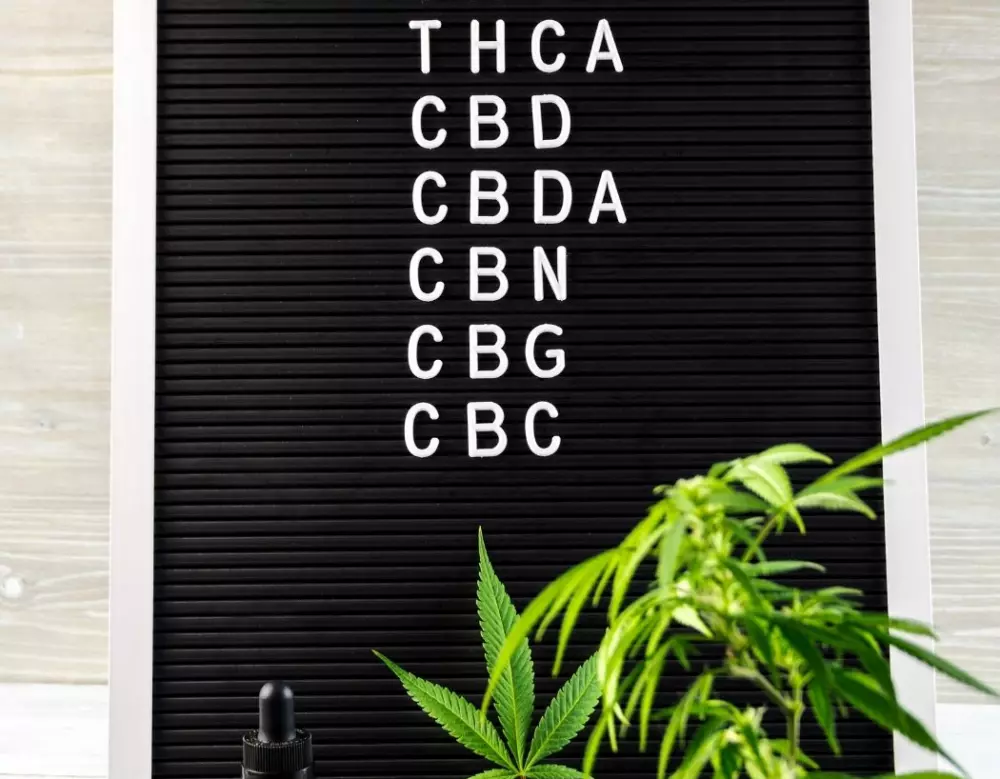We all know THC and CBD… but what about the other 130-plus cannabinoids that are out there? Here’s a handy guide to a few of the hottest minor cannabinoids, where to find them, and what they do.
THC has been the talk of the town since the 70s, and there’s no denying CBD has been stealing the spotlight in the past few years. We’ve watched as these cannabinoid compounds have become household names, and the world is increasingly understanding and accepting of their effects and health benefits.
What you may not know is that CBD and THC are only two of more than 130 cannabinoids that have been isolated from the cannabis plant – and it’s likely there are more still yet to be identified. Thankfully, we’re living in a growing age for cannabis exploration, and ever-increasing studies are rolling out with new insight about the plant and how it interacts with our body. However, it should be noted that due to cannabis’ classification as a Schedule 1 controlled substance in the United States, domestic research has been limited, and countries such as Israel and Canada are currently leading in global cannabis studies.
The Alphabet Soup of Cannabinoids
So what
are the other cannabinoids in the plant, and what do they do? While we’re still learning about most of these cannabinoids, there’s been research to support that the below compounds interact with the CB1 and CB2 receptors in several ways.
CBG
It is only fitting to begin with this cannabinoid, known as the “mother cannabinoid” in the plant. It is the cannabinoid produced first during the plant’s growth cycle from which all other cannabinoids derive as the plant grows. CBG available in the marketplace is derived from young plants, which carry the compound in higher concentrations. Like CBD, CBG is non-intoxicating and has been shown to have anti-inflammatory and anti-bacterial qualities. Hemp-derived CBG products are available for shipping nationwide.
CBDA
In the raw cannabis plant, CBDA is the precursor to CBD; the CBDA compound converts to CBD through a process called decarboxylation when heat is applied to the plant material. Sourced from raw fresh plant material, CBDA has potent anti-inflammatory effects, has been noted to boost serotonin levels and fight depression. CBDA has also shown promise as a nausea treatment and may be an even more effective anti-convulsant than CBD. Try juicing fresh cannabis if you have access to the plant, or source a high-quality CBDA tincture.
THCA
Like CBDA, THCA occurs in the raw plant, then converts to THC. While THC is noted mostly for its psychoactive effects, THCA is a more therapeutic compound, offering anti-inflammatory, anti-nausea, and neuro-protectant qualities. THCA is available in the raw cannabis plant, but THCA products are only sold in legal cannabis markets.
CBN
This is another compound making waves in the minor cannabinoid world, and for good reason: It can help you sleep! CBN develops as the plant ages; it’s a derivative of THC. If you’ve ever noticed that an old jar of weed you found laying around made you very sleepy, that’s CBN rearing its head! It has also been shown to treat inflammation and work as an immune system regulator. There are a variety of hemp-derived products available for shipping nationwide… or if you’re feeling experimental, leave a jar of your stash in the sun for a couple of weeks, and smoke it for a great night’s sleep.
THCV
This compound occurs in small amounts in the cannabis plant, making it one of the more difficult cannabinoids to source and isolate, but you can expect to see more THCV products make their way to market in recreational states because THCV has a notable quality of acting as an appetite suppressant. Research has also shown that THCV can help regulate blood sugar levels as a diabetes treatment, and even stimulate bone growth.
Delta-8-THC
The cannabinoid we refer to as THC is technically called Delta-9-THC. Its cousin Delta-8-THC has similar, but less potent psychoactive effects. Users report feeling a mild, clear-headed high free from paranoia. Delta-8-THC appears to combat nausea, and stoke an appetite for those with medical need. Because Delta-8-THC occurs in such low levels in hemp plants, products available for sale nationwide are typically made by altering CBD’s molecular structure.
CBC
CBC is a powerful pain-fighter, shown to stimulate the release of the body’s natural pain-fighting compounds while acting as an anti-inflammatory. CBC has strong topical uses, as it has antiviral and antibacterial qualities and effects the sebaceous glands that lubricate the skin. Look for full-spectrum (or whole-plant) CBC products, as this cannabinoid works best as part of the entourage effect.
THCP
You may recall headlines in late 2019 about the discovery of a cannabinoid called THCP, which was noted to activate the CB1 receptor a remarkable 33 percent more than THC. While research into this cannabinoid is extremely new, what has been discovered holds great promise for the future of this cannabinoid. Not only is it extremely reactive at the CB1 receptor, it appears in a much smaller percentage in the plant, meaning it is much more potent than THC.
As we continue to learn more about the compounds in this plant and their effects, we will certainly see new segments of the industry develop around these isolated cannabinoids and their powerful effects.
Follow author Rachel Burkons @smokesipsavor.
